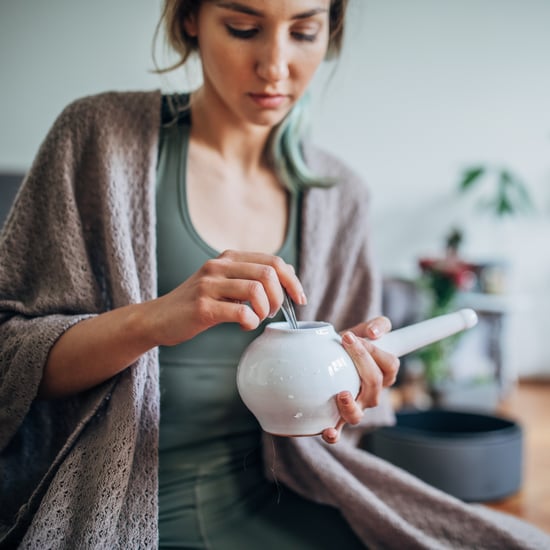Why Am I Having Trouble Climaxing?
4 Things You Can Do to Achieve More Frequent, More Satisfying Orgasms

According to Planned Parenthood, about one in three women have trouble climaxing during sex. Reasons for struggling in this department can vary: for young women, birth control pills are often the culprit as they interrupt estrogen production, while anxiety, self-doubt, antidepressants, and simply not knowing what gets you off are some of the most common orgasm impediments, says gynecologist Dr. Prudence Hall. And if you've found that you can't orgasm through vaginal penetration alone, know that most ladies (about 75 percent) require clitoral stimulation to get the job done.
Looking for ways to take your orgasms to the next level? See what Dr. Hall, author of Radiant Again & Forever, "prescribes" her patients who complain of infrequent and/or poor Os. Spoiler: it sometimes takes more than switching up positions — and that's OK!
- Get bloodwork done: A blood analysis can provide a snapshot of what's going on with your body, including sexually. For example, low estrogen levels result in low libido while testosterone and DHEA levels can affect female sexual response.
- Look at the mechanical reasons: Age and giving birth are inevitable factors that cause lost vaginal muscle tone, but there are simple ways to improve this without having to resort to surgical or chemical solutions. Kegel exercises and Ben Wa balls may be just your answer.
- Try enhancing topicals: Dr. Hall recommends applying a testosterone or amino acid cream to the labial area to help intensify response and pleasure. Do your research and compare different products, like yummy warming oils and cannabis-infused lube, that will up your bedroom game.
- Consider oxytocin: Also called "the love hormone," oxytocin is a natural, powerful hormone that plays a role in how we orgasm. Dr. Hall said it can be taken orally in lozenge form, but you can also consult your doctor for ways you and your partner can stimulate the body's natural production. For example, oxytocin levels increase when we hug or kiss a loved one.
Since all of our bodies are different, there isn't a one-size-fits-all prescription that will solve all your bedroom woes. The best way to find out what works for you is to practice on your own. Experiment with different toys and methods, either alone or with your partner, to get a better understanding of what turns you on. You may find that you require extended foreplay to become fully aroused or that you need a combination of both vaginal and clitoral stimulation to achieve orgasm. And when it comes to communicating with your partner, make sure to be vocal about your needs, whatever they may be!







